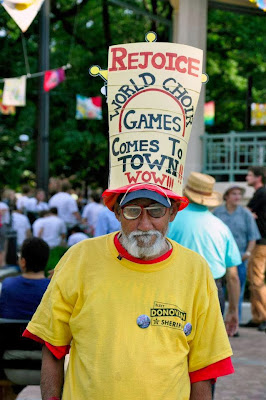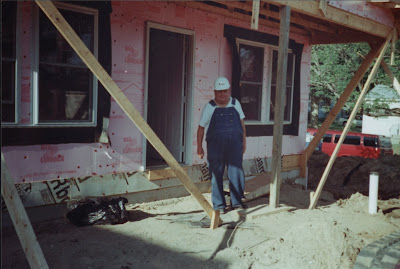What we need is hatred. From it our ideas are born.
Jean Genet
Read more at http://www.brainyquote.com/quotes/authors/j/jean_genet.html#zCV2yW1ltXDgRy2a.99
Jean Genet
Read more at http://www.brainyquote.com/quotes/authors/j/jean_genet.html#zCV2yW1ltXDgRy2a.99
What we need is hatred. From it our ideas are born.
Jean Genet
Read more at http://www.brainyquote.com/quotes/authors/j/jean_genet.html#zCV2yW1ltXDgRy2a.99
Jean Genet
Read more at http://www.brainyquote.com/quotes/authors/j/jean_genet.html#zCV2yW1ltXDgRy2a.99
What we need is hatred. From it our ideas are born.
Jean Genet
Read more at http://www.brainyquote.com/quotes/authors/j/jean_genet.html#zCV2yW1ltXDgRy2a.99
Jean Genet
Read more at http://www.brainyquote.com/quotes/authors/j/jean_genet.html#zCV2yW1ltXDgRy2a.99
In all the furor and bull-shit surrounding the Duck Dynasty head honcho's statements in GQ about homosexuals, etc., something gets lost in the translation as pundits, reporters, zealots, activtists and others come to the fore to debate/explain/categorize/condemn/praise: the guy just plain does not understand gay folks. He is mystified by them and their behavior. The very logic, or lack thereof, of a gay guy's existence stimulates rhetoric in him: “It seems like, to me, a vagina—as a man—would be more desirable than a man’s anus. That’s just me. I’m just thinking: There’s more there! She’s got more to offer. I mean, come on, dudes! You know what I’m saying? But hey, sin: It’s not logical, my man. It’s just not logical.”
That's more like disbelief, than belief, if you ask me. But then he's quoted as getting a little more rigid later in the article. In trying to figure out why he is confronted with such illogical people and behavior, he posits: "Everything is blurred on what’s right and what’s wrong. Sin becomes fine. Start with homosexual behavior and just morph out from there. Bestiality, sleeping around with this woman and that woman and that woman and those men. 'Don’t be deceived. Neither the adulterers, the idolaters, the male prostitutes, the homosexual offenders, the greedy, the drunkards, the slanderers, the swindlers'—they won’t inherit the kingdom of God. Don’t deceive yourself. It’s not right.”
From not understanding the anatomy involved to condemning people to hell, all in one fell swoop. Talk about a slippery slope.
The pundits and reporters, et. al. going on and on about this "controversy" all try to structure it as a logical argument about freedom of speech and religious beliefs versus political correctness and identity politics. I don't think once I heard anyone say anything about manners. Just good old plain grace and kindness? I guess you don't expect it from the Duck People, but still they seem to flaunt their sweetness on their reality show, as in they all dress up in camouflage and kill things, but there they are all of a sudden saying grace at the dinner-table, or there one of them is kissing his sweet wife good night. Etcetera. Meaning: they depend on people understanding them as good old boys. It's their brand.
Phil Robertson is an ass-hole who likes to pretend he is mystified by ass-holes and their uses. He is a finger-pointer, bully, and all around heterosexual offender. I write short stories about the people Phil says won't be let into the Kingdom of God. These characters I write occupy the same white-trash spaces and places good old Phil does in his reality world. And usually in my stories there are folks like him, kindly gentlemen in camouflage and beards who act like your buddy but then can turn on you in a flash. That's the power they like to have. On his show Phil and the network only allow us glimpses into his best behavior. We don't know him outside of the cartoon he allows us, and in the GQ article he is just another cartoon of course but also menacingly real, not daffy and downhome. He's saying serious things but the cartoon configuration is allowing him to be let off the hook.
The initial fury over his remarks has dissipated. All the Duck Dynasty merch is being reshelved after a few days of outrage and debate. This isn't going to be a Paula Deen knock-down. It's going to be Freedom of Religion Rides Again.
Which is very sad because the crap Phil said is just as bad, maybe even more toxic, than what came out of Paula's mouth when she thought no one was looking. Phil said what he said to a reporter in a high-class magazine. He wants us to know how disgusted he is; in fact I think he wants us to join in and identify with it. That's the horror. A little while back I saw a documentary called Valentine Road on HBO, about a foster-kid named Larry King who liked to dress up in girl clothes and go to school. One day, dressed up like that, he asked another boy to be his Valentine, and that boy the next day brought a gun to school and shot Larry in the back of the head in broad daylight. Many people were outraged in the community, but just as many, perhaps more, said things about how if Larry had not dressed up like a girl none of this bloodshed would have happened.
People are people, I know, and reality shows are stupid and worthless and brainless. And Phil Robertson is an idiot, but what's scary is the reaction he gets: people I actually know and like are defending him and his right to be a monster. I don't get it. I guess you have to live inside the fear-zone people like Phil instill to truly get it. He's not Santa Claus. He's not an evangelist. He's a bully and a bastard, and the Kingdom of God can have him.


.jpg)























.jpg)
.jpg)








